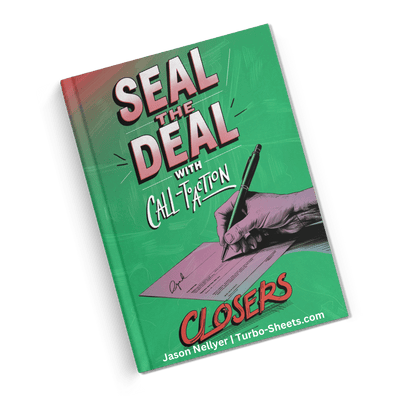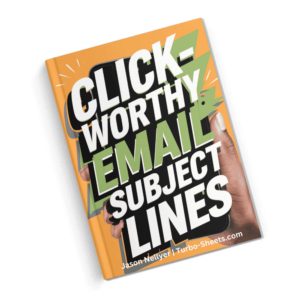🔥 Take Charge Of Your Blog With My Expert Tips and Tools! | Empowering You With My Blog and Resources!
Cancelled Order Emails
About That Order...
Uh oh. That dreaded "Order Cancelled" email just landed. Feels rubbish, doesn't it? 😥 How can businesses turn this potential disaster into something... less awful?
Sending a thoughtful email when an order gets cancelled shows you actually care about your customers, making them more likely to stick around despite the hiccup.
But hold on, isn't it just a quick notification? Does it *really* need that much fuss?
Some might argue that the priority is just letting the customer know quickly, rather than crafting a super-detailed message. Speed over sentiment, perhaps? 🤔
Okay, fair point. But getting this wrong can really damage trust. Let's look at how to get these tricky emails spot on. 👍
In This Article
-
- Why These Emails Matter More Than You Think
- What Info Absolutely Must Be Included
- Getting the Tone Just Right (Be Human!)
- Soften the Blow: Offer Alternatives
- Handy Templates You Can Pinch 😉
- Stop Cancellations Before They Start
- When Customers Change Their Mind
- Keeping It Legal: Rules & Regs
- Getting Your Team Ready For This
- Are Your Emails Working? Check This!
- Conclusion
- Action Points
Why These Emails Matter More Than You Think
The First Impression Lasts (Even Here)
Right, let's be honest. Nobody *likes* getting a cancellation email. It's a letdown. But the way you handle it speaks volumes about your business. A cold, robotic message? Forget it. That customer probably isn't coming back. It suggests you don't really value their business or their feelings about the situation. It’s a missed chance to show you’re actually decent folks.
Makes you think, doesn't it?
On the flip side, a message that's clear, apologetic, and helpful? That can actually salvage the situation. It shows you acknowledge the inconvenience and you're trying to make amends. This is your moment to prove your customer service chops, even when things go pear-shaped. It transforms a negative into a... well, less negative, possibly even neutral experience. Keeping that customer relationship intact is key.
Who knew an email could do so much?
Think about your own experiences. Have you ever received a cancellation email that made you feel completely dismissed? Or one that, surprisingly, left you feeling okay about the company? That difference often comes down to the effort, or lack thereof, put into that simple notification. It’s a critical touchpoint. This is where *improving customer experience after order cancellation* truly begins.
Building (or Breaking) Trust
Trust is fragile, especially in online shopping where you can't look someone in the eye. When an order gets cancelled, that trust takes a hit. The reason could be stock issues, payment problems, or something else entirely. Whatever the cause, the customer feels let down. Your cancellation email is your first - and maybe only - chance to start rebuilding that trust immediately. Be upfront, be honest.
Honesty is the best policy, eh?
Transparency is your best mate here. Explain *why* the order was cancelled, even if it's a bit embarrassing (like an inventory mistake). Vague excuses just make people suspicious. A clear explanation, paired with a sincere apology, shows respect for the customer and their time. It says, "We messed up, we're sorry, and here's why." That level of openness can go a long way.
Nobody likes being left in the dark. 🔦
Failing to communicate properly can shatter trust instantly. If a customer has to chase you for information or gets conflicting stories, they'll likely write you off for good. A well-handled cancellation, however, demonstrates reliability even in failure. It shows you're accountable and you care about setting things right. Use a clear *order cancellation email to customer explaining reason*.
Keeping Customers Coming Back
Okay, so an order got cancelled. Annoying, yes. End of the relationship? Not necessarily! A cancellation email isn't just bad news; it's a chance to retain that customer. How you manage this interaction heavily influences whether they’ll give you another shot. Offering a discount on a future purchase or suggesting similar products can turn disappointment into a future sale.
Every cloud has a silver lining... maybe?
Think about the lifetime value of a customer. Losing them over one cancelled order hurts your bottom line more than you might think. A little bit of goodwill via the cancellation email - a heartfelt apology, maybe free shipping next time, or pointing them to alternatives - can significantly increase the odds they’ll shop with you again. It’s about playing the long game.
Don't lose them over one slip-up!
Remember, acquiring a new customer is way more expensive than keeping an existing one. Your *customer service email for cancelled order* is a crucial tool in your retention toolkit. Make it count. Show them they matter, even when things haven’t gone to plan. Treat them right, and they might just become even more loyal. Weird how that works, eh?
Your Brand's Voice Matters
Every email you send, including the dreaded cancellation notice, reflects your brand's personality. Are you formal and corporate? Friendly and approachable? Quirky and fun? Whatever your brand voice is, it needs to come through consistently, even in difficult communications like these. Dropping the ball here makes your brand feel inconsistent or, worse, uncaring.
Keep it real, keep it you. 😎
Using your established brand voice helps humanise the interaction. If your brand is usually lighthearted, a sudden switch to overly formal language in a cancellation email can feel jarring. Stick to your tone, but layer it with extra empathy. Acknowledge the frustration, apologise sincerely, but do it in a way that sounds like *you*. It makes the message feel more genuine.
Consistency is comforting, even now.
This consistency reinforces your brand identity and helps manage customer expectations. They chose your brand for a reason; don’t give them whiplash with a tone-deaf cancellation email. Use it as an opportunity to show your brand’s character and commitment to customer care, reinforcing the positive aspects they were initially drawn to. It shows you're solid.
What Info Absolutely Must Be Included
The Obvious Stuff (But Don't Forget It!)
Alright, let's start with the basics. Your cancellation email absolutely *must* clearly state which order has been cancelled. Include the order number, the date the order was placed, and ideally, a list of the item(s) that were cancelled. This avoids any confusion, especially if the customer has placed multiple orders with you recently. Make it foolproof!
Sounds simple, but easily missed!
Imagine getting a vague email saying "an order" was cancelled. Panic! Which one? Was it the gift for Mum's birthday?! 😱 Avoid causing unnecessary stress by being super specific right from the start. Put the order number prominently, maybe even in the subject line, like "Update on your Order [Order Number]". Clarity first, always.
No room for guesswork here.
Also, make sure your company name and contact information are clearly visible. If the customer needs to get in touch with questions (and they might!), make it easy for them. Include a link to your customer service page, a phone number, or an email address they can reply to. Don't make them hunt for ways to reach you.
The Reason Why (Be Honest!)
This is crucial. You need to explain *why* the order was cancelled. Was it a stock issue? A problem processing the payment? A technical glitch on your website? Be as upfront and honest as possible. As mentioned before, vague reasons breed suspicion and frustration. If you messed up (e.g., oversold an item), own it.
Just rip the plaster off.
Phrasing matters, of course. You can be honest without being overly blunt or technical. For example, instead of "Inventory management system failure," try "Unfortunately, the item sold out faster than our system could update." It’s softer but still truthful. Providing a clear *order cancellation explanation email* shows respect.
A little human touch goes far.
If the cancellation was due to an issue on the customer's end (like a failed payment), explain clearly what happened and what steps they might need to take, if any. For example, "We couldn't process the payment for your order. Please check your card details and try placing the order again if you wish." Keep it helpful, not accusatory.
What Happens Next (Refunds etc.)
Okay, the order is cancelled. What does that mean for the customer's money? Your email needs to clearly state the refund status. Have they already been charged? If so, explain when and how they will be refunded. Specify the timeframe (e.g., "You'll see the refund in your account within 5-7 working days").
Money matters need clarity! 💰
If no payment was taken (perhaps the cancellation happened before processing), make that clear too. "Don't worry, you haven't been charged for this order." This reassures the customer and prevents anxious calls to their bank. Managing expectations around refunds is vital for maintaining trust after a cancellation.
Reassurance is golden.
Include details about any store credit or points if applicable. If they used a voucher code on the cancelled order, explain if it can be reused or if you're issuing a new one. Cover all the financial bases clearly and proactively. Don't leave them wondering about their hard-earned cash.
A Sincere Apology
Never underestimate the power of a simple, genuine apology. Acknowledge the inconvenience and disappointment this cancellation has caused. Phrases like "We're really sorry for the inconvenience" or "We sincerely apologise for cancelling your order" are essential. It shows empathy and acknowledges their frustration.
Sorry seems to be the hardest word? 🤔
Make it sound like you mean it. Avoid generic, corporate-speak apologies that sound like they were written by a robot. Inject some warmth and humanity. "We're genuinely gutted this happened" might fit a more informal brand voice, for example. Match the apology's tone to your overall brand personality, but always ensure it sounds sincere.
Mean what you say.
Position the apology prominently in the email – perhaps right after explaining the cancellation. Don't bury it at the bottom. This demonstrates that you prioritise acknowledging their feelings. It's a small thing, but it makes a big difference in how the *customer service response to order cancellation* is received.
Getting the Tone Just Right (Be Human!)
Empathy is Everything
Put yourself in your customer's shoes. They were likely looking forward to receiving their order. Maybe it was a gift, something for a special occasion, or just something they really wanted. Getting a cancellation email is disappointing, maybe even frustrating. Your tone needs to reflect that you get it. Use empathetic language.
Feel their pain (a little bit!).
Phrases like "We understand this is frustrating" or "We know this isn't the news you wanted to hear" show that you're considering their feelings. Avoid sounding defensive or making excuses. Focus on acknowledging their perspective. This empathetic approach can soften the blow and make the customer feel heard and valued, even amidst the bad news.
A little kindness costs nothing.
Train your team (or yourself!) to think about the customer experience first. Every cancelled order represents a moment of disappointment. How can you make that moment slightly less rubbish? By showing you care. This isn't just about process; it's about human connection. That's key for *improving customer experience after order cancellation*.
Keep it Clear and Simple
While empathy is key, don't waffle. Get straight to the point, but do it gently. Use clear, simple language. Avoid jargon, technical terms, or overly complex sentences. The customer needs to quickly know what's happened, why, and what the next steps are. Confusion just adds to the frustration.
No need for fancy words.
Structure the email logically. Use short paragraphs and maybe bullet points for key information like order details or refund timelines. A well-structured email is easier to read and digest, especially when someone is likely already a bit annoyed. Clarity reduces friction and helps the customer process the information quickly.
Easy peasy reading, please.
Read the email aloud before sending (or setting up the template). Does it flow naturally? Does it sound like something a helpful human would say? If it sounds stiff, robotic, or confusing, rewrite it. Simplicity and clarity are your best friends when delivering bad news. Make your *order cancellation message to customer* effortless to process.
Match Your Brand Voice
We touched on this before, but it’s worth repeating. Your cancellation email should sound like it comes from *your* brand. If your brand is generally informal and friendly, maintain that tone (while adding extra empathy). If you're more formal, stick to that, but ensure it still sounds caring and not cold.
Don't be a brand chameleon!
Inconsistency is jarring. Imagine a quirky, fun brand sending a super-stiff, corporate cancellation notice. It feels off. Use the same language, style, and even visual elements (like logos and colours) that you use in your other communications. This reinforces your brand identity even in tough situations.
Stay true to your style.
However, always prioritise empathy and clarity over rigidly sticking to a brand voice if it hinders delivering the message effectively. If your usual tone is very jokey, you might need to dial that back slightly to avoid sounding flippant about the customer's disappointment. Find the right balance – be yourself, but be sensitive.
Avoid Blame Language
Even if the cancellation *was* due to something the customer did (like an incorrect address or failed payment), avoid language that sounds accusatory. Instead of "You entered the wrong address," try "The delivery address provided seemed incorrect, so we had to cancel." It frames the issue neutrally.
It's not about pointing fingers. 👉
Focus on the facts and the solution. Explain the issue clearly and provide guidance on how to resolve it if possible (e.g., "Please update your payment details in your account and feel free to place the order again"). Your goal is to help the customer, not make them feel bad or defensive.
Help, don't hinder.
If the fault lies with your business (stock error, tech glitch), own it fully. Don't try to shift blame or minimise the mistake. A straightforward acceptance of responsibility builds far more trust than trying to deflect. Honesty and accountability are key components of a good *customer service email for cancelled order*.
Soften the Blow: Offer Alternatives
Suggest Similar Products
Okay, the item they wanted is gone. Gutting. But maybe you have something similar they might like? If the cancellation was due to stock issues, suggesting alternative products is a great way to potentially rescue the sale and show you're still trying to help. Include pictures and direct links if possible.
Maybe they'll like Plan B?
Make sure the suggestions are genuinely relevant. Don't just link to random bestsellers. If they ordered a specific type of blue jumper, suggest other blue jumpers or similar styles. Personalisation matters. It shows you've put some thought into it, rather than just firing off an automated list.
Relevance is key, folks.
Frame it helpfully: "We're so sorry your chosen item is unavailable. Perhaps one of these similar styles might interest you?" This proactive approach can direct the customer's attention towards a potential new purchase, turning disappointment into discovery. It’s a smart way to use the *ecommerce order cancellation email examples* you might build.
Offer a Discount or Incentive
A gesture of goodwill can go a long way. Offering a discount on their next purchase, free shipping, or a small voucher acknowledges the inconvenience caused by the cancellation. It sweetens the pill and encourages them to give your store another try. It shows you value their business.
A little sweetener helps! 🍬
Be clear about the offer – how much is the discount, how long is it valid for, and are there any restrictions? Make it easy for them to use. Including a unique discount code directly in the email is often the simplest approach. This tangible benefit can significantly *improve customer experience after order cancellation*.
Make the offer easy to grab.
Don't feel obligated to offer huge discounts every time, especially if the cancellation reason wasn't your fault. However, even a small gesture, like 10% off or free delivery, shows you care and want to retain their custom. It's an investment in the future relationship.
Notify When Back in Stock
If the item was cancelled because it's temporarily out of stock, offer the customer the option to be notified when it becomes available again. This is particularly useful for popular items. Include a clear call-to-action, like a button or link they can click to sign up for stock alerts.
Let them know when it's back! 🔔
This turns a dead end into a potential future sale. The customer might still be interested in that specific item, and giving them an easy way to get it later keeps them engaged with your brand. It shows you’re thinking ahead and trying to fulfil their original request eventually.
Keeps hope alive, right?
Make sure your stock notification system is reliable! There's nothing worse than promising a notification that never arrives, or arriving after the item has sold out again. This feature needs to work seamlessly to be effective. It’s part of providing good *customer service after order cancellation*.
Provide Excellent Support Access
Sometimes, despite your best efforts, the customer will still have questions or concerns. Make it incredibly easy for them to contact your support team. Provide clear contact options – phone number, email address, live chat link – directly within the cancellation email. Don't make them search your website.
Be easy to reach! 📞
Ensure your support team is briefed on how to handle inquiries related to cancelled orders empathetically and efficiently. They should have access to the order details and the reason for cancellation, so they can provide consistent and helpful information. A smooth support experience is crucial.
Joined-up thinking saves headaches.
Highlighting accessible support reassures the customer that help is available if they need it. Even if they don't end up contacting you, just knowing the option is there can reduce anxiety and frustration. It reinforces the message that you care about resolving the issue.
Handy Templates You Can Pinch 😉
Basic Cancellation (Stock Issue)
Here’s a simple template you can adapt. Remember to fill in the bracketed parts and adjust the tone to your brand voice! This covers the essentials for when an item unexpectedly goes out of stock after ordering. It aims for clarity and offers a next step.
Just plug in your details!
Subject: An Update Regarding Your Recent Order [Order Number]
Hi [Customer Name],
We're getting in touch about your recent order, [Order Number], placed on [Date].
Unfortunately, due to unexpected demand, the following item(s) have gone out of stock and we've had to cancel them from your order: [List of Item(s)]. We're really sorry about this - we know it's disappointing news.
[If payment taken:] You haven't been charged for the cancelled item(s), or if payment was processed, we've issued a full refund. You should see it back in your account within [X-Y] working days.
[If payment not taken:] Don't worry, you haven't been charged for this item/order.
We apologise again for any inconvenience caused. If you have any questions, please don't hesitate to contact us here: [Link to Contact Page or Email Address].
Best regards,
The [Your Company Name] Team
Simple, clear, apologetic. Good start.
This *cancelled order email template* provides the core information: what was cancelled, why (stock issue), and the refund status. It includes a clear apology and contact information. It’s a solid foundation you can build upon with offers or alternative product suggestions if appropriate for your situation and brand.
Cancellation with Alternatives & Discount
Let's enhance the basic template. This version includes suggestions for similar products and offers a discount as a gesture of goodwill. It aims not just to inform, but also to retain the customer and potentially convert the cancellation into a different sale. Shows a bit more effort!
Going the extra mile... 🏃♀️
Subject: So Sorry! Issue with Order [Order Number] & A Little Something From Us
Hi [Customer Name],
We're so sorry, but we've had to cancel part/all of your recent order ([Order Number]) placed on [Date].
The item(s) [List of Item(s)] unfortunately became unavailable just before we could process your order. We know how frustrating this is, and we sincerely apologise for letting you down.
[Refund information as per previous template].
While we don't have the exact item you wanted, perhaps one of these similar products might catch your eye?
[Link/Image to Alternative 1]
[Link/Image to Alternative 2]
To make up for the disappointment, please accept [e.g., 15% off] your next order with code SORRY15. Valid for [Duration].
Thanks for your patience. If you need anything else, just give us a shout: [Contact Info].
Warmly,
The [Your Company Name] Team
A bit more proactive, eh?
This template shows you're actively trying to make things right. Suggesting alternatives and offering a discount can significantly soften the blow of the cancellation. Remember to tailor the alternatives and the discount offer appropriately. This approach increases the chance of customer retention.
Cancellation (Payment Issue)
Sometimes the cancellation is due to a problem processing the payment. This requires a slightly different approach – clear explanation without sounding accusatory, and guidance on next steps. The focus is on informing the customer and enabling them to potentially reorder if they wish.
Handling the tricky payment stuff...
Subject: Action Needed: Issue Processing Payment for Order [Order Number]
Hi [Customer Name],
We're writing about your recent order, [Order Number]. Unfortunately, we encountered an issue processing the payment, and as a result, we've had to cancel the order.
This sometimes happens due to incorrect card details, expired cards, or bank security checks. You haven't been charged for this order.
If you'd still like to purchase the items, please double-check your payment details are up to date in your account and then place the order again through our website: [Link to Website].
We're sorry for any trouble this may cause. If you have any questions or need help re-ordering, please contact us here: [Contact Info].
Thanks,
The [Your Company Name] Team
Clear, concise, and helpful.
This template clearly explains the reason (payment issue) without placing blame. It confirms no charge was made and provides a direct path for the customer to try again if they choose. It maintains a helpful and supportive tone, which is crucial even when the issue originated externally.
Customising Your Templates
These templates are just starting points! The *best cancelled order email template* is one that fits your brand, your customers, and the specific situation. Think about your typical customer and how they prefer to communicate. Are they likely to appreciate emojis? A more formal or informal tone? Test different versions!
Make it your own! ✨
Consider adding elements like:
- A direct link to the customer's account page.
- Information about loyalty points used or earned.
- A link to your returns/cancellation policy page for transparency.
- Social media links if that fits your brand engagement.
Continuously review and refine your templates based on customer feedback and performance.
Never stop tweaking!
Remember to segment your templates based on the cancellation reason. A stock issue email needs different content than a payment failure email or a suspected fraud cancellation. Sending the *right* message in the *right* tone for each scenario shows attention to detail and improves the customer experience.
Stop Cancellations Before They Start
Keep Inventory Accurate
One of the most common reasons for order cancellations? Selling stuff you don't actually have. Oops. Preventing this comes down to solid inventory management. Ensure your stock levels sync accurately and frequently between your sales channels (website, physical store, marketplaces) and your warehouse or stockroom.
Count those widgets carefully! 🔢
Invest in reliable inventory management software if you haven't already. Manual tracking is prone to errors, especially as your business grows. Real-time updates are crucial to avoid overselling. Set low-stock alerts so you know when items are running out *before* they hit zero.
Tech can be your friend here.
Regular stocktakes (physically counting your inventory) are also important to catch discrepancies between your system and reality. Accurate stock data means fewer disappointed customers receiving cancellation emails due to items being unexpectedly out of stock. This prevents many *order cancellation explanation emails* needing to be sent.
Streamline Payment Processing
Payment failures are another frequent cause of cancellations. Work with a reliable payment gateway provider that offers robust security checks but also minimises legitimate transactions being flagged as fraudulent (false positives). Ensure your checkout process clearly shows accepted payment methods and any requirements.
Smooth payments = happy days.
Offer multiple payment options if possible (credit/debit cards, PayPal, Apple Pay, etc.). This gives customers flexibility and can reduce failures if one method has temporary issues. Make sure error messages during checkout are clear and helpful, guiding the customer on how to fix the problem rather than just saying "Payment failed".
More ways to pay is good.
Regularly review your payment failure rates and reasons. Are certain card types failing more often? Is your fraud detection system too aggressive? Investigating patterns can help you identify and fix underlying issues, leading to fewer payment-related cancellations and a smoother checkout experience for everyone.
Verify Addresses Proactively
Incorrect or incomplete delivery addresses can lead to failed deliveries and subsequent order cancellations. Implement address verification tools (AVS) during checkout. These tools can automatically check if the entered address is valid and suggest corrections, reducing the chance of shipping errors.
Stop parcels going AWOL! 🗺️
Make the address fields clear and easy to use. Consider separate fields for house number/name, street, town, postcode, etc., rather than one large box. Provide examples of the correct format, especially for tricky addresses or international shipping. Little details can make a big difference.
Guide them gently.
If an address looks potentially problematic after the order is placed, have a process to try and verify it *before* shipping or cancelling. This might involve a quick automated email asking the customer to confirm their details, or even a manual check by your team for high-value orders. Proactive checks beat reactive cancellations.
Manage Pre-Orders & Backorders Carefully
Selling items before they are in stock (pre-orders or backorders) can be a great strategy, but it needs careful management. Be crystal clear with customers about the estimated shipping date *before* they order. Display this information prominently on the product page and during checkout.
Don't over-promise! ⏳
Keep customers updated if there are any delays to the estimated shipping date. Proactive communication is essential. Don't wait until the original date has passed to inform them of a hold-up. Sending updates builds trust and manages expectations, reducing the likelihood they'll get frustrated and request a cancellation.
Keep them in the loop.
Have robust processes for tracking pre-orders and ensuring stock is allocated correctly when it arrives. Overselling pre-orders is a recipe for disaster and mass cancellations. Only offer quantities you are confident you can secure from your suppliers. Under-promise and over-deliver where possible regarding timelines.
When Customers Change Their Mind
Making Cancellation Easy (For Them)
Sometimes, it's not you, it's them! Customers might need to cancel an order for loads of reasons - maybe they ordered the wrong thing, found it cheaper elsewhere, or simply changed their mind. Your job is to make this process as painless as possible for them. A difficult cancellation process leads to frustration and lost future business.
Nobody likes jumping through hoops.
Offer a clear and easy way for customers to request a cancellation, ideally through their online account or a simple contact form. Burying the option deep in your website or forcing them to call during specific hours is just asking for trouble (and unhappy customers!). Make your *customer initiated order cancellation policy* visible and straightforward.
Keep it simple, silly!
Think about the cut-off point for cancellations. Usually, once an order has been processed or shipped, it can't be cancelled, and it becomes a return instead. Be upfront about this timeframe in your policy and during the order process. Clarity prevents confusion and manages expectations effectively from the start.
Your Cancellation Policy Clarity
Having a clear, well-written cancellation policy is essential. It should be easy to find on your website – often linked in the footer or within your general terms and conditions. Use plain language, avoid legal jargon, and clearly state how customers can cancel, any time limits, and what happens regarding refunds.
No one wants to read gobbledegook.
Specify different scenarios if needed. For example, are the rules different for standard items versus personalised goods? What about digital products? A comprehensive policy covers these bases and acts as a reliable point of reference for both customers and your support team. It avoids disputes down the line.
Cover all your bases.
Remember to comply with relevant consumer rights legislation (more on that in the next section!). In the UK, customers generally have rights to cancel online orders within a certain period. Your policy must reflect these legal minimums, although you can offer more generous terms if you wish. Transparency builds trust.
Communication When They Cancel
When a customer successfully cancels an order, they need confirmation! Send an automated email immediately confirming the cancellation and detailing the refund process (if applicable). This reassures them that their request has been actioned and tells them what to expect next regarding their money.
Keep them informed, always.
This *handling customer cancellation requests email* should be just as clear and helpful as the emails *you* send when *you* have to cancel. Include the order number, cancelled items, and refund details. Maintain your brand voice and a helpful tone, even though no sale occurred this time. A positive experience might bring them back later.
Every interaction counts.
If a cancellation request comes in too late (e.g., the item has already shipped), respond promptly explaining why it can't be cancelled and outlining the returns process instead. Provide clear instructions on how to return the item once received. Quick, clear communication prevents frustration.
Learning from Customer Cancellations
While you want to make cancellations easy, it's also worth tracking *why* customers are cancelling. If you can capture this information (perhaps via an optional dropdown menu during the cancellation process), it can provide valuable insights. Are people finding items cheaper elsewhere? Is your delivery time too long?
Knowledge is power, after all.
Look for patterns. A sudden spike in cancellations for a specific product might indicate an issue with the product description or images. High cancellation rates shortly after ordering could suggest buyer's remorse prompted by pricing or shipping costs. Use this data to make improvements.
Spot the trends!
This feedback loop helps you address underlying issues that might be costing you sales. It turns the cancellation process from just an administrative task into a source of business intelligence, helping you refine your offerings, pricing, or website usability to reduce future cancellations proactively.
Keeping It Legal: Rules & Regs
Consumer Rights Act & Distance Selling
In the UK, consumer rights are pretty strong, especially for online or 'distance' purchases. The Consumer Rights Act 2015 and the Consumer Contracts Regulations 2013 give customers specific rights, including the right to cancel orders for most goods within a 'cooling-off' period (typically 14 days after receiving the item).
Know the basic rules!
Your cancellation policy and process *must* comply with these regulations. This includes informing customers of their right to cancel *before* they order. You also need to provide a model cancellation form (though customers don't have to use it). Failing to inform them correctly can even extend their cancellation period!
Don't get caught out.
There are exceptions, like personalised items or perishable goods, where the right to cancel doesn't automatically apply. Make sure you understand which of your products fall into these categories and clearly communicate this to customers. Understanding the *legal requirements for order cancellations UK* is non-negotiable.
Refund Rules and Timelines
When an order is cancelled (either by you or the customer within their rights), you generally need to issue a refund promptly. The regulations specify you must refund within 14 days of being informed of the cancellation (if goods weren't dispatched) or 14 days of receiving the goods back (or proof of return).
Pay back on time! ⏰
The refund must typically include the standard delivery costs the customer paid initially. However, if they chose a more expensive delivery option (like next-day delivery when standard was available), you usually only need to refund the cost of the standard option. Be clear about this in your policy.
Details matter with refunds.
Make sure your payment processing system can handle refunds efficiently and correctly. Delays or errors in refunds are a major source of customer complaints and damage trust significantly. A smooth refund process is a critical part of handling cancellations professionally and legally.
Data Protection (GDPR)
Remember GDPR? It applies here too. When you handle order cancellations, you're processing customer data (name, address, order details, potentially cancellation reasons). You need a legitimate basis for processing this data and you must handle it securely. Inform customers about how their data is used in your privacy policy.
Data privacy is key. 🔒
Be mindful of data minimisation. Only collect the information you actually need to process the cancellation and refund. Don't ask for unnecessary details. If you're capturing reasons for cancellation, consider making it optional or anonymising the data later if possible.
Less data, less risk.
Customers also have rights regarding their data, like the right to access or erase it. Ensure your processes allow you to comply with these requests. Handling *GDPR and order cancellation data* correctly protects your customers and keeps your business compliant, avoiding potentially hefty fines.
Clear Terms and Conditions
Your overall Terms and Conditions (T&Cs) are the bedrock of your legal relationship with the customer. Ensure your cancellation policy is clearly referenced or included within your T&Cs. They should cover all aspects of the ordering, payment, delivery, cancellation, and returns process in clear, unambiguous language.
Get your T&Cs sorted.
Make sure your T&Cs are easily accessible from all pages of your website, especially during the checkout process. Customers should ideally have to acknowledge they've read and accepted the T&Cs before placing an order. This helps ensure they are aware of the policies, including cancellation rules.
Tick the box!
Review and update your T&Cs regularly, especially if your processes change or if consumer laws are updated. Having robust, clear, and legally compliant T&Cs protects both you and your customers, providing a clear framework for transactions and dispute resolution if needed.
Getting Your Team Ready For This
Consistent Messaging is Crucial
Whether it's an email template or a customer service agent on the phone, the message regarding cancellations needs to be consistent. Everyone in your team who interacts with customers should understand the policy, the reasons why cancellations happen, and the appropriate tone to use.
Sing from the same hymn sheet!
Inconsistent information is confusing and frustrating for customers. Imagine one email saying a refund takes 5 days, but a phone agent says 10 days. It erodes trust. Ensure your templates are up-to-date and your team knows where to find the correct information quickly. Regular internal updates help.
Keep everyone updated.
Develop clear internal guidelines or FAQs for your team covering common cancellation scenarios. This empowers them to answer customer queries accurately and confidently. Consistency builds professionalism and ensures a smoother experience for the customer, even when dealing with bad news. *Staff training for handling cancellations* pays off.
Empowering Your Support Staff
Give your customer service team the tools and authority they need to resolve cancellation issues effectively. If they constantly have to escalate simple queries or lack access to order details and refund systems, it slows things down and frustrates both staff and customers. Trust your team.
Give them the right tools. 🛠️
Provide training not just on the *process* but also on the *tone*. Empathy training can help agents handle upset or disappointed customers more effectively. Role-playing different scenarios can build confidence. Equip them to offer goodwill gestures (like discounts) within defined limits when appropriate.
Practice makes perfect.
An empowered agent who can solve a problem quickly and empathetically can turn a negative situation around. They become brand advocates, demonstrating your commitment to customer care. Investing in your support team's training and tools is investing in your customer relationships.
Internal Cancellation Processes
How does a cancellation actually happen behind the scenes in your business? Map out the process. What triggers a cancellation? Who actiones it? How is the inventory updated? How is the refund initiated? How is the customer notified? Having a clear, efficient internal workflow is vital.
Know your internal steps.
Identify potential bottlenecks or points of failure in your internal process. Where could delays occur? Where might errors creep in (e.g., refunding the wrong amount)? Streamlining this workflow reduces the chance of mistakes and ensures cancellations are handled promptly and correctly every time.
Iron out the kinks.
Use your order management system effectively. Automate steps where possible (like sending confirmation emails) to improve speed and consistency. Ensure different teams involved (e.g., warehouse, finance, customer service) communicate effectively during the process. A smooth internal process leads to a smoother external experience.
Feedback Loop: Team to Business
Your customer-facing team is on the front line. They hear directly from customers about what's causing frustration or leading to cancellations. Create a system for them to feed this information back into the business. What are the common complaints? What issues keep cropping up?
Listen to your team! 👂
Regular meetings or a dedicated channel for feedback can help identify recurring problems that might need addressing further up the chain – perhaps issues with product descriptions, website glitches, or inventory inaccuracies. This feedback is invaluable for continuous improvement.
Spot patterns together.
Acting on this internal feedback shows your team their input is valued and helps improve the overall customer experience. It closes the loop, ensuring that insights gained from handling cancellations contribute to preventing future ones or improving how they are managed across the board.
Are Your Emails Working? Check This!
Tracking Key Cancellation Metrics
You can't improve what you don't measure! Start tracking key metrics related to your order cancellations. What's your overall cancellation rate (cancelled orders as a percentage of total orders)? Is it going up or down? What are the main reasons for cancellations?
Numbers tell a story. 📊
Monitor cancellation rates by product, category, or even customer segment. Are certain items frequently cancelled due to stock issues? Are new customers cancelling more often than returning ones? This data helps pinpoint specific problem areas that need attention. Dig into the details!
Find the problem spots.
Also, track metrics related to your cancellation *emails*. What's the open rate? Are customers clicking on links to alternative products or contacting support after receiving the email? *Measuring cancellation rate impact* and email effectiveness helps you see if your communications are hitting the mark.
Analysing Cancellation Reasons
Dig deeper into *why* orders are being cancelled. Categorise the reasons – stock issues, payment failures, customer request, suspected fraud, technical error, etc. Regularly analyse this data to understand the biggest drivers of cancellations in your business. Don't just guess; use the data.
Get to the root cause.
Are most cancellations preventable (e.g., stock control) or unavoidable (e.g., customer changed mind)? Focus your improvement efforts on the biggest preventable causes. If stock issues are number one, prioritise improving inventory management. If payment failures are high, review your payment gateway.
Focus your efforts wisely.
Sharing these insights across relevant teams (operations, marketing, tech) ensures everyone understands the impact of cancellations and can contribute to reducing them. Tackling the root causes is far more effective than just getting better at writing apologetic emails.
A/B Testing Your Emails
Think your cancellation email is pretty good? Maybe it could be better! Use A/B testing to try out different versions. Test different subject lines to see which get higher open rates. Test different tones of voice – more empathetic versus more direct?
Experiment and learn!
Try testing the placement or type of call-to-action. Does offering a discount code directly in the email lead to more future purchases compared to just suggesting alternatives? Does including a direct support phone number reduce follow-up emails? Small changes can make a difference.
Test one thing at a time.
Measure the results carefully. Which version leads to better outcomes (e.g., higher click-through rate on alternative products, better customer satisfaction scores if you measure them, lower rates of complaints)? Use this data to continuously refine and optimise your cancellation emails for better results.
Gathering Customer Feedback
Data tells you *what* is happening, but customer feedback tells you *why* and *how it felt*. Consider ways to gather feedback specifically about the cancellation experience. Could you include a simple one-click feedback link ("Was this email helpful?") at the bottom of your cancellation emails?
Ask them directly! 🤔
You could also send out occasional customer surveys that include questions about their experience if they've had an order cancelled. What did they think of the communication? Was the reason clear? Was the refund processed promptly? This qualitative feedback is gold dust.
Listen to their words.
Combine this direct feedback with your metrics to get a full picture. Maybe your emails are clear, but customers are still frustrated by the underlying reason for cancellation. This feedback helps you prioritise improvements, both in your communication and your operational processes, closing the loop on *improving order fulfillment to reduce cancellations*.
Conclusion
So, cancelled order emails – not exactly fun, but definitely important. Getting them right transforms a moment of customer disappointment into a chance to show you care. It's about clear communication, genuine empathy, and offering helpful solutions, not just delivering bad news. Use a good *order cancellation email to customer explaining reason*.
Remember to be human! Explain clearly why the cancellation happened, what the refund situation is, and apologise sincerely. Match the tone to your brand but always prioritise sensitivity. Consider offering alternatives, discounts, or stock notifications to soften the blow and encourage future business. Test and refine your approach.
Ultimately, the best strategy is prevention. Accurate inventory, smooth payments, and clear communication about pre-orders can stop many cancellations before they happen. But when they do occur, a thoughtful, helpful email makes all the difference in keeping that customer relationship alive. 💪
Points For Consideration
-
- Review your current cancellation email template today.
- Check your inventory system's accuracy this week.
- Offer a small discount in cancellation emails?
- Make customer support contacts super visible in emails.
- Ask customers for feedback on their cancellation experience.
Hi! I'm Jason!

Hey there! I'm Jason and i'm here to help you succeed with your online business.
Whether you are an internet marketer or a regular business with a website I can help you succeed.
Looking for more traffic, leads or sales? Stick around, you've come to exactly the right place to help you succeed!
(And yeh, I LOVE coffee!)
Let's Connect!
Subscribe
Join 20,000+ subscribers and get access to my free resources right in your inbox.
Grab This Free Ebook!
Bloggers Swipe File
Never struggle with content ideas again!
Learn How To:
- Write compelling headlines
- Structure engaging posts
- Boost reader engagement
- Increase shares and traffic
- Save time on writing
Pay nil at the checkout!
Hit the button and complete via checkout.
Be Quick! Get It Free Before The Counter Hits Zero!
Grab This Free Ebook!
Hypnotic Openings
Grab attention from the very first sentence!
Learn How To:
- Write curiosity-driven intros
- Use storytelling for impact
- Set the tone instantly
- Create emotional connections
- Keep readers hooked
Pay nil at the checkout!
Hit the button and complete via checkout.
Be Quick! Get It Free Before The Counter Hits Zero!
Grab This Free Ebook!
Click-Worthy Headlines
Boost your open rates with subject lines that demand attention!
Learn How To:
- Write curiosity-driven subjects
- Use power words effectively
- Leverage personalisation
- Create urgency and FOMO
- A/B test for best results
Pay nil at the checkout!
Hit the button and complete via checkout.
Be Quick! Get It Free Before The Counter Hits Zero!
Grab This Free Ebook!
Killer Blog Post Headlines
Struggling to come up with blog titles?
Learn How To:
- Write click-worthy titles
- Use power words effectively
- Optimise for SEO and social
- Create curiosity and urgency
- Increase reader engagement
Pay nil at the checkout!
Hit the button and complete via checkout.
Be Quick! Get It Free Before The Counter Hits Zero!
Grab This Free Ebook!
Persuasive Guarantees
Eliminate buyer hesitation with compelling guarantees that build trust and boost conversions.
Learn How To:
- Craft trust-building guarantees
- Reduce purchase hesitation
- Use social proof effectively
- Make bold but believable claims
- Turn sceptics into buyers
Pay nil at the checkout!
Hit the button and complete via checkout.
Be Quick! Get It Free Before The Counter Hits Zero!
Grab This Free Ebook!
Powerful Postscripts
The last thing readers see is often the most persuasive!
Learn How To:
- Use postscripts for impact
- Reinforce key benefits
- Create urgency effortlessly
- Add emotional appeal
- Boost conversions instantly
Pay nil at the checkout! Hit the button, go to the menu (shopping cart) (no purchase req'd), then complete via checkout.
Be Quick! Get It Free Before The Counter Hits Zero!
Grab This Free Ebook!
CTA Closers
A weak CTA means lost sales!
Learn How To:
- Write clear, action-driven CTAs
- Create urgency and scarcity
- Use persuasive language
- Guide readers effortlessly
- Increase sales and engagement
Pay nil at the checkout!
Hit the button and complete via checkout.
Be Quick! Get It Free Before The Counter Hits Zero!
Grab This Free Ebook!
Sell The Outcome
People don’t buy products - they buy results!
Learn How To:
- Highlight key benefits
- Speak to reader desires
- Create irresistible curiosity
- Tap into emotions effectively
- Increase conversions instantly
Pay nil at the checkout!
Hit the button and complete via checkout.
Be Quick! Get It Free Before The Counter Hits Zero!
Grab This Free Ebook!
Scroll Stoppers
Stand out in crowded feeds with scroll-stopping techniques!
Learn How To:
- Craft eye-catching headlines
- Use power words effectively
- Create curiosity-driven content
- Boost shares and interactions
- Drive more clicks and leads
Pay nil at the checkout!
Hit the button and complete via checkout.
Be Quick! Get It Free Before The Counter Hits Zero!
Grab This Free Ebook!
Perfect Headlines
Your title makes or breaks your blog post!
Learn How To:
- Write SEO-friendly titles
- Grab attention instantly
- Use curiosity for engagement
- Increase shares and clicks
- Convert readers into fans
Pay nil at the checkout!
Hit the button and complete via checkout.
Be Quick! Get It Free Before The Counter Hits Zero!
Grab This Free Ebook!
Convert With Bullet Points
Turn scanners into buyers with bullet points that sell!
Learn How To:
- Highlight key benefits
- Create intrigue effortlessly
- Keep readers engaged
- Maximise sales copy impact
- Make content easy to scan
Pay nil at the checkout!
Hit the button and complete via checkout.
Be Quick! Get It Free Before The Counter Hits Zero!
Grab This Free Ebook!
Action Headlines
Your headline is your first impression - make it count!
Learn How To:
- Use power words strategically
- Create curiosity and intrigue
- Structure headlines for impact
- Make readers take action
- Write for SEO and engagement
Pay nil at the checkout!
Hit the button and complete via checkout.
Be Quick! Get It Free Before The Counter Hits Zero!



























